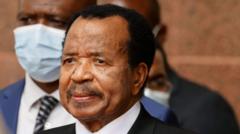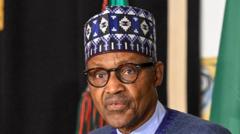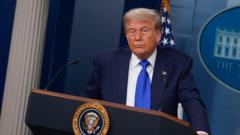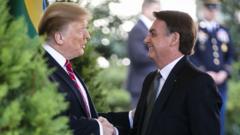In the face of soaring house prices and relentless rental increases, Australia finds itself in the midst of a housing crisis that's become a key focus as federal elections draw near. Voters are increasingly concerned about affordability, with both the Labor Party and the Liberal-National Coalition outlining their plans to address these pressing issues. The crisis, exacerbated by rising living costs and international economic pressures, poses a significant challenge to political leaders who must convince the electorate they can restore access to homeownership.
Australia's Housing Crisis Takes Center Stage Ahead of Federal Election
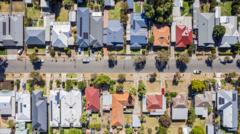
Australia's Housing Crisis Takes Center Stage Ahead of Federal Election
As Australia grapples with significant housing challenges, both major political parties present their strategies in the lead up to the upcoming federal election.
The Australian housing market has been severely strained due to a combination of factors including a high population growth rate, restrictive planning regulations, and inadequate public housing. The lack of new housing construction has resulted in inflated prices, pushing the average house price in Sydney to approximately A$1.2 million. While imbalances in the property market have left many struggling to afford rent, with rents nationwide rising 36.1% since the start of the pandemic, many are being forced into homelessness or overcrowded living conditions.
In terms of political discourse, both major parties have put forth differing strategies. Labor has proposed to build 1.2 million new homes by 2029, alongside a substantial investment in supporting first-time buyers, while the Coalition has committed to a more modest 500,000 homes with an infrastructure boost to support housing development. On the other hand, the Greens have been advocating for stronger protections for renters, proposing rent freezes and reforming tax incentives for property investors.
Experts have mixed feelings about the efficacy of these proposed solutions. While they appreciate the attention to the crisis, they argue that mere increases in construction or migration cuts may not address the root causes effectively. Some analytics suggest that current proposals may leave both parties short of meeting the critical housing demand, further complicating the path to recovery.
As the federal election approaches, the housing crisis showcases the urgent need for comprehensive policies to better address the issues plaguing Australians seeking affordable housing. With public sentiment squarely on the challenges of homeownership and rental prices, voters are poised to weigh the promises made against the reality of this ongoing crisis.
In terms of political discourse, both major parties have put forth differing strategies. Labor has proposed to build 1.2 million new homes by 2029, alongside a substantial investment in supporting first-time buyers, while the Coalition has committed to a more modest 500,000 homes with an infrastructure boost to support housing development. On the other hand, the Greens have been advocating for stronger protections for renters, proposing rent freezes and reforming tax incentives for property investors.
Experts have mixed feelings about the efficacy of these proposed solutions. While they appreciate the attention to the crisis, they argue that mere increases in construction or migration cuts may not address the root causes effectively. Some analytics suggest that current proposals may leave both parties short of meeting the critical housing demand, further complicating the path to recovery.
As the federal election approaches, the housing crisis showcases the urgent need for comprehensive policies to better address the issues plaguing Australians seeking affordable housing. With public sentiment squarely on the challenges of homeownership and rental prices, voters are poised to weigh the promises made against the reality of this ongoing crisis.









